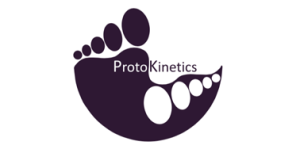According to ProtoKinetics cofounder Michael Rowling, accurate, objective gait analysis is no longer optional for clinicians who desire to help their patients retain, gain, or regain the independence so integral to their daily lives.
Rowling and Youan Chang, former management employees of CIR Systems Inc., acquired the GAITRiteTM M_Sqr technology from CIR Systems and formed ProtoKinetics in April 2012. In less than four years, their best-in-class product and product knowledge, combined with expert customer service, have produced the most popular “gait mat” technology in the world, said Rowling.
Rowling has dedicated more than 25 years of his career to helping researchers and clinicians define and develop measurement tools; the rigorous specifications required to advance cutting-edge research that target improved patient care fuel his passion, he said. Chang, a leading innovator in the world of advanced mathematics, statistics, and signal processing, is well known for his creation of the celebrated Datapac Software package for signal analysis.
“The groundbreaking measurements that Chang has already implemented into the ProtoKinetics software are, according to our customers, ‘revolutionary’ and ‘game changers,’” Rowling said.
Patrick Roscher, MS, joined ProtoKinetics in September 2015. He specializes in collecting and interpreting kinematic, kinetic, and temporospatial gait data for clinical and research patients. Rowling said he is already making a major impact on customer satisfaction.
ProtoKinetics engaged ZenoMetrics, a company headed by Constantin Trantzas, the inventor and manufacturer of the GAITRiteTM System, to create a new generation of walkways (the Zeno Walkway, an enhanced version of the GAITRiteTM M_Sqr).
The Zeno has upgraded electronics and sensing technology that achieve superior sensitivity and linearity. The twoor three-layer portable Zeno’s low-profile housing reduces sensor damage and prevents the edges from curling. This facilitates a smooth transition onto the surface for unassisted walking or when patients are using rolling walkers or other assistive devices.
“Teaming up with Zenometrics to rename and improve the GAITRiteTM M_Sqr has allowed ProtoKinetics to maintain complete continuity in the production of our validated Zeno Walkway,” stressed Rowling. “Our customers are thrilled with the improved look and versatility of the Zeno and can’t believe that PKMAS (ProtoKinetics Movement Analysis Software) is so intuitive, easy to use, and graphically pleasing.”
The traditional ProtoKinetics package includes a Zeno Walkway, a computer with PKMAS, one or two webcams to synchronize video and footfalls, and an interface for marking events. The Zeno is available in 2-, 3-, and 4-foot widths and 8to 52-foot lengths.
PKMAS software enables unlimited collection of multiple passes on the Zeno Walkway. Trials can be started when the patient is standing on the mat or in flight, enabling assessment of balance, walking, running, and jumping. These are just a few of the more than 100 PKMAS measurements: velocity, cadence, step length, instantaneous center of pressure (COP), step time, and toe-in and toe-out angle. Two unique measurements are symmetry of propulsion (SoP) and center of mass estimated (COMe).
The SoP illustrates the relationship between single-leg support and double-leg support. A graphical display of typical SoP performance looks like an hourglass; stroke, cerebral palsy, Parkinson disease, multiple sclerosis, orthopedic injuries, and many other atypical gaits present an asymmetric pattern. These elegant graphical displays offer tremendous insight into the complex task of walking, Rowling said.
Control of the center of mass is integral to proper walking and balance; when compromised, this may lead to falls and decreased mobility. Calculating center of mass, with typical cumbersome setup and data distillation that requires high-speed cameras and reflective markers (with or without force plates), is impractical for clinical use. PKMAS, however, instantaneously calculates COMe, allowing clinicians to make more informed decisions by comparing data between sessions or even within a single session.
ProtoKinetics’ new tagline is, “Leading Innovation in Gait and Balance Measurement.”
“We introduced this tagline in 2015 because we believe that postural control, dynamic balance, and transitional gait performance [starting, turning, braking] are critical components to quantify in clinical practice. The literature indicates more falls occur during transitional movements than during straight-line walking,” he said.
The PKMAS Primary Gait Screen (PGS) is a unique protocol that addresses transitional movements in a single test (typically performed in less than one minute) that requires no editing and is easy to administer. Data are available immediately. Key gait metrics include efficiency, symmetry, and speed. Currently clinicians and researchers at more than 20 diverse sites— including pediatric, geriatric, O&P, and movement disorder settings—plan to collect data with the PKMAS PGS. They are excited about the opportunity to rapidly capture robust transitional data that may lead to better clinical care, Rowling said.
“ProtoKinetics values our clients’ time, expertise, and loyalty. That’s why, in 2016, we will introduce a new customercentric web portal enabling individualized materials to be shared within an organization. In addition, analytical tools and customizable resources will help ProtoKinetics’ on-line communities and user groups establish multisite collaboration,” he said.
Article sponsored by ProtoKinetics.










